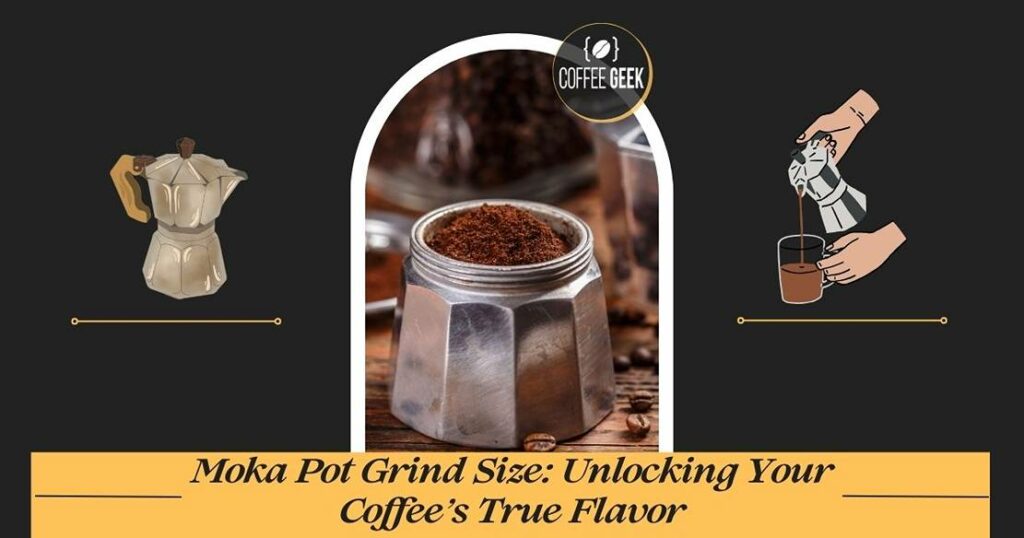Moka pot coffee is known for its rich and bold flavor, making it a popular choice among coffee enthusiasts.
Achieving the perfect brew with a moka pot involves various factors such as grind size, water to coffee ratio, and extraction techniques.
One essential aspect to pay attention to when brewing moka pot coffee is finding the right grind size to get balanced flavors and a smooth texture.
What is the best moka pot grind size? Let’s find out.

Understanding the fundamentals of moka pot brewing and the role of grind size in the process can greatly enhance your coffee brewing experience.
Different grind sizes can lead to varying extraction rates, which directly impact the taste of your coffee.
By experimenting with grind sizes, you can find the ideal balance of flavors and aromas that suits your personal preference.
Key Takeaways
- Choosing the right grind size is crucial for optimal moka pot coffee flavor and texture.
- Experimenting with different grind sizes can lead to a better understanding of coffee extraction and brewing techniques.
- Proper maintenance and grinding tools are essential for consistent coffee results and a more enjoyable brewing experience.
- Fundamentals of Moka Pot Brewing
- Understanding Coffee and Grind Size
- Experimenting with Grind Size for Moka Pot
- Grinding Techniques and Tools
- Extraction: A Key to Flavorful Coffee
- Different Types of Coffee Brews
- Perfecting Water to Coffee Ratio
- Proper Maintenance of Your Moka Pot
- Complementing Your Moka Pot Brew with Other Techniques
- Understanding Coffee Characteristics To Enhance Your Brew
- Final Words
- Frequently Asked Questions
Fundamentals of Moka Pot Brewing
Moka pot is a popular stovetop coffee brewing method that allows you to brew a rich and flavorful cup of coffee.
It’s essential to understand some of the critical aspects of this brewing method to achieve the best taste and enjoy a fantastic coffee experience.
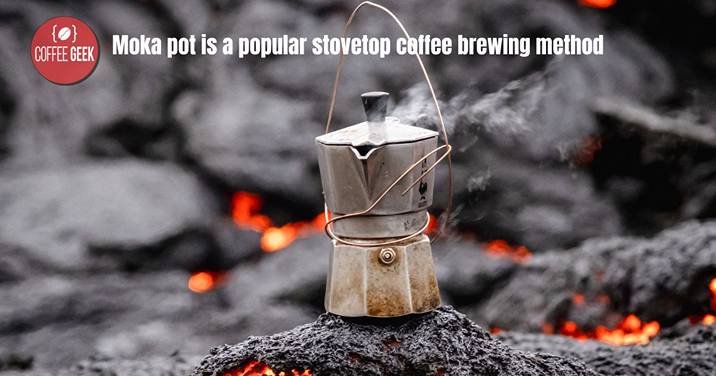
Firstly, use fresh water for brewing. The water quality and temperature will significantly impact the taste of your coffee. Ideally, you should use filtered water and a cold temperature to start the brewing process.
This will allow for a more controlled heat and pressure buildup, resulting in a smooth and balanced extraction.
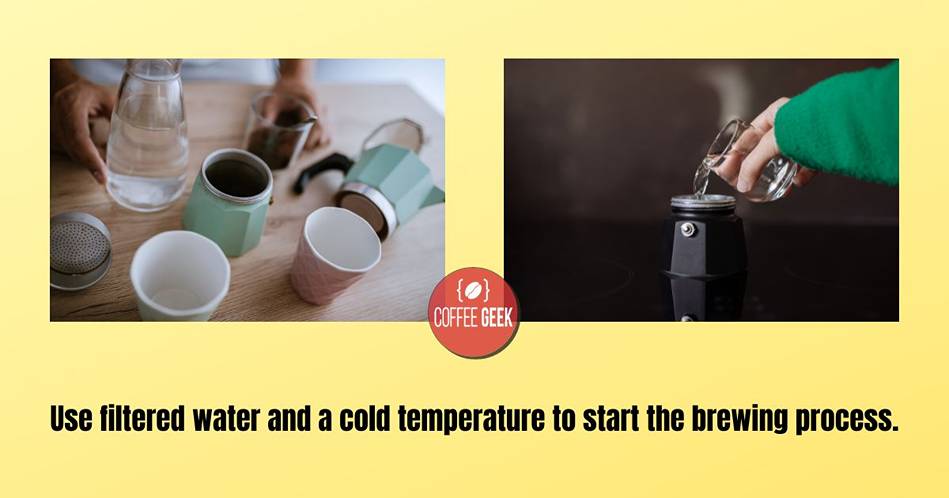
The brewing temperature plays a vital role in the moka pot’s brewing process.
Since it is a stovetop coffee maker, the heat source can vary; that’s why you should pay attention to the temperature settings on your stove.
Aim for a medium heat, which will enable the moka pot to reach the desired pressure without overheating or burning the coffee.
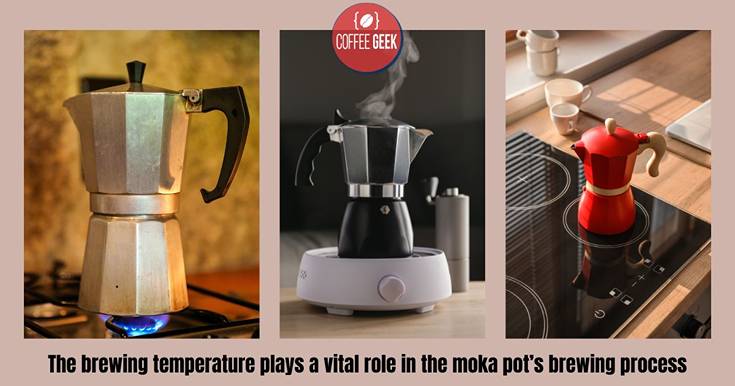
Speaking of pressure, the moka pot operates at a lower pressure than an espresso machine, typically around 1.5 bar.
This pressure is what extracts the coffee solubles, giving your coffee that bold and robust flavor.
To ensure the right pressure for brewing, it’s essential to keep the stovetop temperature in check and use an appropriate coffee grind size.
When it comes to grind size, a fine to medium-fine grind is recommended for moka pot brewing. This allows for a proper extraction rate while not clogging the filter.
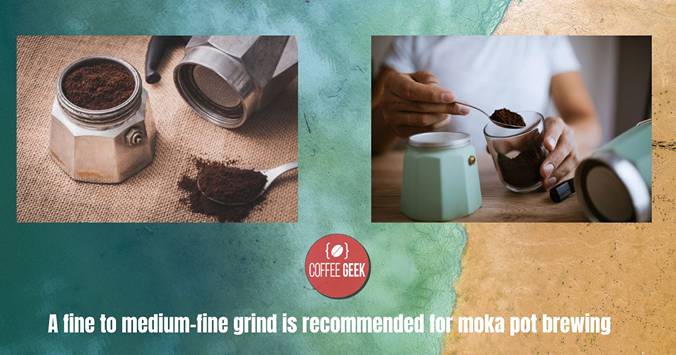
The grind size should be slightly finer than table salt, but coarser than flour, falling in the range of 360-660 microns.
Lastly, don’t forget to pay attention to the brewing time. A typical moka pot brewing process takes between 5 to 10 minutes, depending on the heat settings and the size of the pot.
Keep an eye on the coffee as it starts to flow into the upper chamber, and remove the pot from the heat once you hear a bubbling sound or when the coffee stops flowing.
By keeping these fundamentals in mind, you can master the art of moka pot brewing and enjoy a delicious cup of coffee that suits your taste and preference.
Embrace the process and experiment with different variables to find the perfect balance and flavor for your morning coffee ritual.
Understanding Coffee and Grind Size
When brewing coffee, one crucial aspect to consider is the grind size of your coffee beans. The grind size has a significant impact on the flavor and aroma of your final cup.
In this section, we will explain why grind size matters and how to achieve the optimal grind size for your moka pot.
The grind size refers to the size of the coffee particles when the beans are ground. The size of these particles determines the surface area exposed to water during the brewing process.
A larger surface area allows for a quicker extraction of flavors and aromas, while a smaller surface area results in a slower extraction.
Therefore, finding the right balance between the size of your coffee grounds and the brewing method is crucial.

For the moka pot brewing method, the recommended coffee grind size falls between espresso grind and drip grind.
Moka pots generate pressure during brewing similar to espresso makers, but the pressure is lower in comparison. As a result, a slightly coarser grind than espresso grind works best for moka pots.
Achieving the optimal grind size ensures a balanced extraction of flavors and aromas without over-extracting or under-extracting your coffee.
To find the right coffee grind size for your moka pot, start with whole coffee beans and a good quality burr grinder. Begin with a grind setting that is finer than drip grind but coarser than espresso grind.
As you brew with different grind sizes, pay attention to the taste and aroma of your coffee. Adjust the grind size accordingly until you find the perfect balance for your taste preferences.
Remember, a well-balanced and flavorful cup of coffee is the result of finding the right grind size for your brewing method.
By understanding the importance of coffee grind size and experimenting with different settings, you can unlock the full potential of your coffee beans and enjoy a delicious cup of moka pot coffee every time. Happy brewing!
Experimenting with Grind Size for Moka Pot
When exploring the world of Moka pot coffee, one essential factor to consider is the grind size. To achieve the perfect cup, you will need to find the ideal balance between a fine and medium-fine grind.
In this section, let’s dive into experimenting with different grind sizes to optimize your Moka pot brewing experience.
Begin your experiment by choosing a coffee bean you enjoy and setting up your Moka pot. For the first attempt, start with a fine grind, slightly finer than sand, with particles roughly 1/32 inch in size.
Measure your coffee-to-water ratio, aiming for a standard ratio, such as 1:16 or 1:18, depending on your taste preferences.
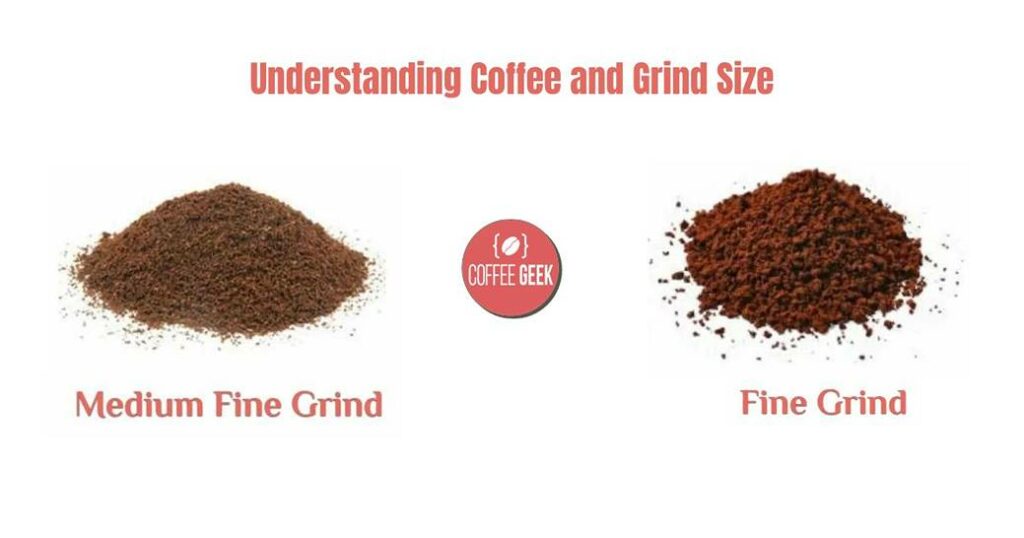
Next, pay attention to the brewing process, checking for any errors or potential issues. If you find your coffee tastes over-extracted or bitter, it might indicate that the grind size is too fine for your Moka pot.
Make a note of your observations and adjust the grind size accordingly. Keep experimenting and make small adjustments to your grind settings.
Now, try a medium-fine grind size, which should be between 360 microns and 660 microns. Repeat the brewing process and evaluate the coffee’s flavors and texture.
Compare your results with the previous finer grind, considering which texture and taste profile you prefer.
Remember that experimenting takes time, patience, and a willingness to learn from trial and error.
As you continue adjusting grind sizes, you will start noticing the nuances and differences in your Moka pot coffee.
With each experiment, take notes on the results to track your progress and fine-tune your brewing process.
Ultimately, finding the perfect Moka pot grind size is a personal journey, as preferences can vary from one individual to another.
By following these steps and experimenting with different grind sizes, you will be well on the way to discovering the ideal grind size for your Moka pot coffee. Good luck and happy brewing!
Grinding Techniques and Tools
When it comes to brewing coffee with a Moka pot, the grind size plays an important role in the extraction and overall flavor of your coffee.
To achieve the perfect grind size for your Moka pot, which is between 360 microns and 660 microns, having a quality grinder and using proper grinding techniques will make all the difference.
There is a wide range of grinders on the market, but investing in a good quality grinder like the Baratza Encore or the Timemore C2 will provide you with consistent grind sizes and enhance your Moka pot brewing experience.
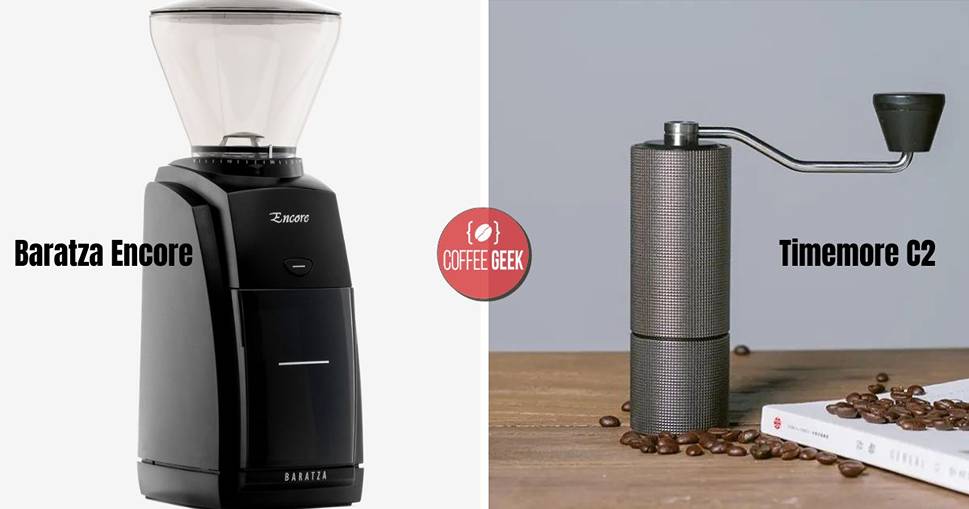
When using a quality grinder, ensure that you clean and maintain it regularly to avoid any inconsistencies that might affect your coffee’s flavor.
Whereas blade grinders can be cheaper, they are less consistent and precise than their burr grinder counterparts.
Blade grinders tend to produce uneven particle sizes, which can result in over-extraction or under-extraction in your Moka pot.
It’s best to avoid blade grinders if you are serious about maximizing the flavor and aroma of your coffee.
Now, let’s go through a step-by-step guide to help you achieve the perfect grind size for your Moka pot:
- Weigh your coffee beans – Use a scale to measure the right amount of coffee beans you need for brewing.
- Set your grinder – Refer to the manufacturer’s recommended settings, or consult a chart that provides grind size guidelines for Moka pots. Start with a recommended setting and adjust according to your taste preferences.
- Grind your coffee – Run your coffee beans through the grinder, ensuring that you do not grind too much coffee at once. Grinding small batches helps maintain consistency.
- Check the consistency – Inspect your ground coffee to see if the particles are too coarse or too fine. If necessary, make adjustments and regrind.
Remember, achieving the perfect size for your Moka pot might require a bit of trial and error, but once you have found the sweet spot, it will be well worth your effort.
Keep experimenting and enjoying the rich coffee flavors brewed from your Moka pot.
Extraction: A Key to Flavorful Coffee
Your coffee’s flavor and aroma depend greatly on the extraction process. Extraction refers to the percentage of soluble compounds pulled from the coffee grounds during the brewing process.
To achieve a well-rounded cup, it’s essential to find the right balance between under-extraction and over-extraction.
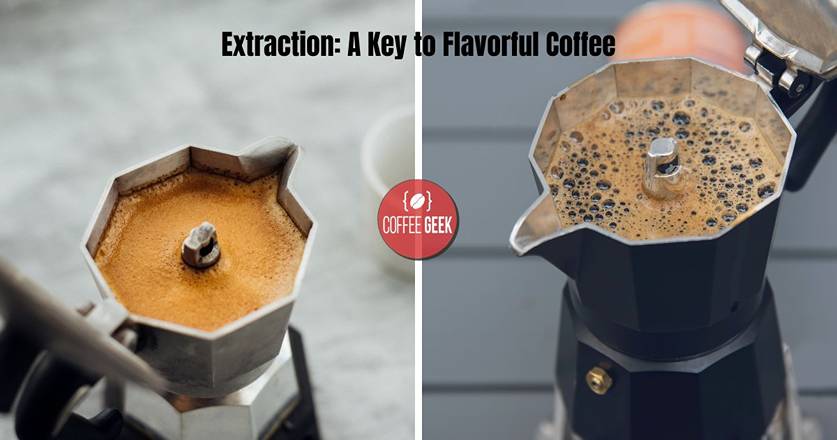
Under-extracted coffee can taste sour and lack complexity. This sourness occurs when the coffee hasn’t been brewed long enough for the water to extract the essential oils and flavors.
Choosing the proper grind size for your brewing method can help prevent under-extraction.
Over-extraction, on the other hand, can lead to bitterness in your coffee. This happens when the water has extracted too much from the coffee grounds, causing the flavor to become overly robust and bitter.
Fine-tuning your grind size, especially for methods like Moka pot, can avoid this issue.
To strike the perfect balance, it’s crucial to monitor both the extraction rate and flow rate during the brewing process.
The Moka pot grind size should be slightly finer than table salt but coarser than flour, ranging between 360-660 microns.
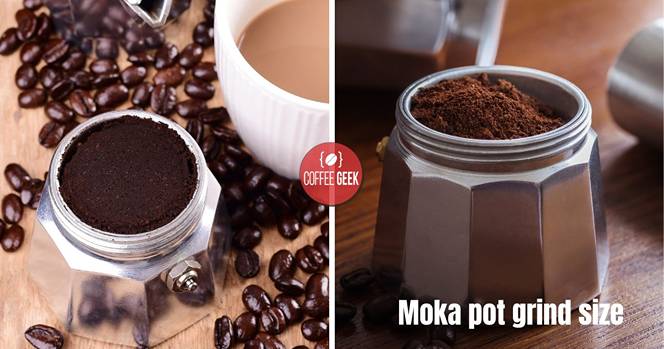
This size helps generate sufficient pressure and achieves a higher extraction with a well-balanced flavor.
Remember, your choice of grind size directly affects the flow rate, which is the speed at which water passes through the coffee grounds.
A fine to medium-fine grind is ideal for Moka pots, as their contact time is short and the pressure is higher compared to typical drip coffee brewers but lower than espresso makers.
Now that you understand the importance of extraction in creating a flavorful coffee, experiment with grind sizes and find the sweet spot for your Moka pot brew.
Remember to stay patient and adjust your technique as needed – soon, you’ll be sipping on a satisfying, aromatic cup of coffee every time.
Different Types of Coffee Brews
When it comes to brewing coffee, there is a wide variety of options, and each method brings its unique taste and characteristics.
The following paragraphs will introduce you to some popular coffee brewing methods, so you can discover new ways to enjoy your favorite beverage.
Moka Pot Coffee is an Italian coffee maker that brews coffee using pressure created by steam. It creates a strong, bold taste, somewhat similar to espresso.
The key to a perfect Moka Pot brew is getting the right grind size, usually between fine and medium, to ensure proper extraction.
Espresso is a classic coffee preparation made by forcing hot water through finely ground coffee.
High pressure and a short brewing time result in a rich and concentrated flavor with a crema on top. Espresso is the base for many coffee drinks, such as lattes and cappuccinos.
Another popular method is using the Aeropress, a manual coffee maker that combines pressure and immersion brewing.
It produces a clean, smooth taste and allows you to experiment with different grind sizes, brewing times, and water temperatures.
Cold Brew refers to the technique of steeping coffee grounds in cold water for an extended period, usually 12-24 hours.
This slow process results in a smooth, low-acidity coffee that is perfect for a refreshing iced drink.
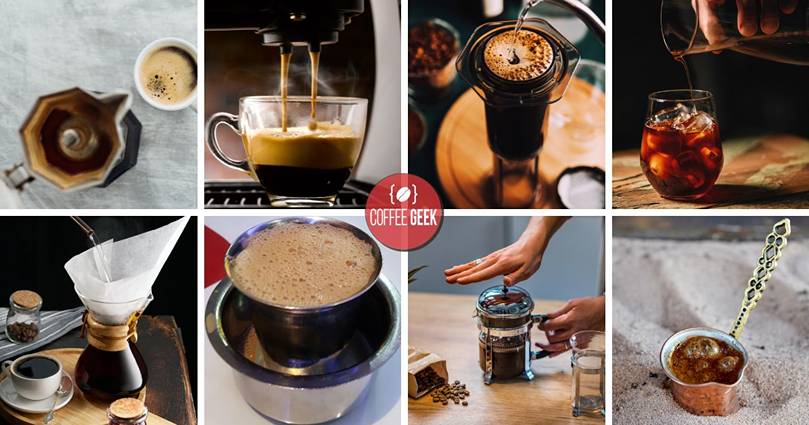
Pour Over methods like the V60 or Chemex involve pouring hot water over coffee grounds in a conical filter, allowing gravity to draw the water through the coffee.
This process brings out more delicate flavors and nuances than an automatic drip coffee maker. A medium grind size is recommended for optimal extraction.
Filter Coffee is made through an automatic drip machine that heats water and then passes it through a paper or metal mesh filter filled with medium-ground coffee.
It produces a balanced and consistent flavor, popular in many households and offices.
French Press is an immersion brewing method in which coarsely ground coffee is steeped in hot water and then separated using a metal plunger.
It produces a full-bodied, rich taste incorporating coffee oils and a small amount of sediment.
If you’re seeking a strong and bold coffee, Turkish Coffee may be for you. It is prepared by simmering finely ground coffee and water in a small pot called a cezve.
The result is a thick, almost syrupy concoction typically served in small cups.
With so many brewing options available, it’s essential to explore and find the method that best suits your taste preferences. Happy brewing!
Perfecting Water to Coffee Ratio
Finding the right water-to-coffee ratio for your Moka pot will elevate your coffee enjoying experience.
To strike the perfect balance, it’s essential to determine the ideal ratio for your specific Moka pot size.
As a starting point, you might consider the following recommendations:
- 1-cup Moka pot: 7 grams of coffee to 50 milliliters of water
- 2-cup Moka pot: 14 grams of coffee to 100 milliliters of water
- 3-cup Moka pot: 20 grams of coffee to 150 milliliters of water
- 4-cup Moka pot: 26 grams of coffee to 200 milliliters of water
- 6-cup Moka pot: 36 grams of coffee to 540 milliliters of water
These ratios will vary depending on the coffee beans and grind size you use, but they are a great starting point to ensure a well-balanced brew.
Using hot water, rather than cold, will speed up the brewing process and preserve your Moka pot’s gasket. Heat your filtered water to about 95°C (203°F) before adding it to the pot.
Filtered water will improve your coffee’s taste as it removes any impurities that could interfere with the flavors.
Avoid using boiling water, as it can cause over-extraction and result in bitter coffee.
When adding your coffee grounds to the Moka pot, be mindful not to pack them too tightly.
Overpacking can increase the brewing pressure, resulting in uneven extraction. Instead, gently level the grounds with your fingers or a butter knife.
As you experiment with your Moka pot, you’ll discover the perfect water to coffee ratio for your preferences.
A great tip is to keep a record of the ratios you’ve tried, along with the grind size, water temperature, and how you enjoyed the coffee.
By doing this, you’ll be able to create a personalized brewing recipe that consistently produces a delicious cup.
With these tips in mind, you’re well on your way to crafting the perfect Moka pot coffee. Enjoy the process, and savor the experience of fine-tuning your brewing skills.
Proper Maintenance of Your Moka Pot
Taking care of your Moka Pot is essential to ensure its longevity and to consistently brew a delicious cup of coffee.
In this section, you’ll learn the appropriate cleaning and maintenance techniques to keep your Moka Pot in excellent condition.
First and foremost, it’s crucial to clean your Moka Pot after each use.
Rinse it thoroughly with warm water, and avoid using any abrasive cleaning tools or harsh detergents, as these can damage the pot’s surface.
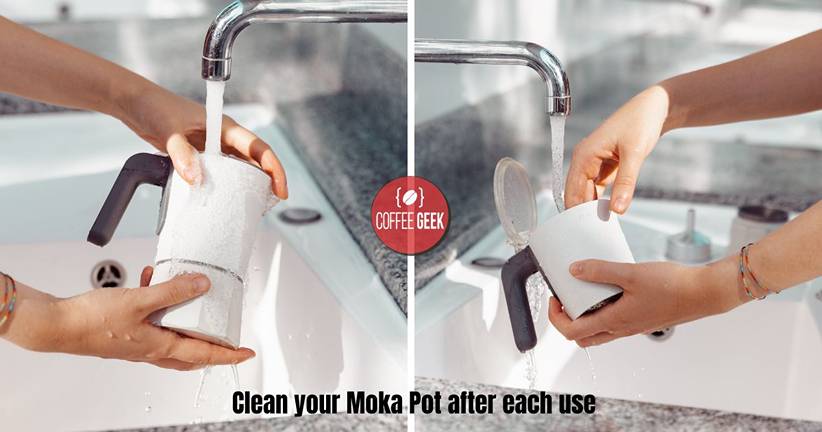
Gently scrub the coffee grounds from the filter plate and the funnel with a soft brush or sponge.
Make sure to remove all remaining coffee residues to prevent buildup and off-flavors in future brews.
It’s important not to forget the safety valve when cleaning your Moka Pot.
The valve plays a vital role in maintaining proper pressure within the pot, so keeping it clean ensures the safety and efficiency of your brew.
To do this, simply insert a toothpick or small brush into the valve hole and gently clean it out.
Be cautious not to apply too much force, as this can damage the valve. Once cleaned, give the valve area a thorough rinse with warm water.
Aside from regular cleaning, periodic maintenance checks can also help prolong the life of your Moka Pot.
Inspect the gasket for wear and tear, as a damaged gasket can lead to leakage and insufficient pressure during brewing.
If you notice any cracks or brittleness, it’s time to replace the gasket. Similarly, check the filter plate for any clogging or warping, and replace it if necessary.
In summary, proper cleaning and maintenance of your Moka Pot, including attention to the valve and gasket, will ensure consistent and delicious coffee, as well as extend the life of your beloved brewing device.
Keep up with these simple practices, and your Moka Pot will remain a dependable companion in your coffee journey.
Complementing Your Moka Pot Brew with Other Techniques
While using the right grind size is essential for a perfect Moka pot brew, there are other techniques to help you achieve an even better cup of coffee.
When preparing your coffee, make sure you evenly distribute the grounds in the filter basket to create a consistent coffee bed.
This helps with even extraction and prevents clogging.
You might consider lightly tamping the grounds to create a uniform surface, but avoid over-tamping, as this can lead to over-extraction and a bitter taste.
Another trick to enhance the flavor of your Moka pot coffee is to add a pinch of salt to the grounds before brewing.
Salt helps balance the acids and sugars in the coffee, providing a smoother and more pleasant mouthfeel.
Be cautious with the amount, as too much salt can ruin the taste.
The choice of beans can also impact your final brew.
Experiment with different roast levels and consider using a lighter roast as they typically contain more oils, acids, and sugars while still giving you the desired body and mouthfeel.
Lighter roasts might require a slightly finer grind for better consistency and control of the extraction process.
A consistent brewing duration also plays a crucial role in preventing weak or bitter coffee.
Time your brew and make note of the changes in taste when adjusting grind sizes or other parameters, aiming for a brewing time of around 45-60 seconds.
Lastly, maintain your Moka pot and grinder by cleaning them regularly.
This ensures precision in grind settings and prevents residual oils and fines from affecting the taste of your coffee. It also helps avoid clogging issues in the filter basket.
By incorporating these additional techniques into your Moka pot brewing routine, you’ll be well on your way to crafting the perfect cup of coffee. Happy brewing!
Understanding Coffee Characteristics To Enhance Your Brew
When brewing coffee with a Moka pot, it’s essential to understand the various coffee characteristics that can impact the taste and quality of your brew.
By doing so, you can make adjustments to your technique and create the perfect cup of coffee every time.
One of the key characteristics to consider is the acidity of your coffee. Different coffee beans have varying levels of acidity, and this can significantly affect the taste of your Moka pot brew.
Generally, acidic coffee can be bright and tangy, providing a refreshing and lively sensation on the palate.
To reduce the acidity level, you may want to experiment with using a medium-fine grind and tweaking the brewing time.
Sweetness is another characteristic that can enhance the overall flavor of your coffee.
While not all coffee beans naturally possess sweetness, you can extract some of the inherent sugars from the beans during the brewing process.
To do so, ensure you use fresh coffee beans and grind them just before brewing.
The presence of fats in your coffee can contribute to a richer and more velvety texture.
Using darker roasted coffee beans can increase the concentration of fats in your brew, making your Moka pot coffee more indulgent and satisfying.
Lastly, the freshness of your ingredients plays a crucial role in the quality of your Moka pot brew. Ideally, you should try to source freshly roasted coffee beans.
As coffee beans age, they lose their volatile aromatic compounds, which contribute to the complex and delightful flavors associated with good coffee.
By considering these aspects of coffee characteristics and adjusting your Moka pot grind, technique, and bean choice accordingly, you’ll be able to enhance the flavor and overall enjoyment of your brew.
Remember, a friendly and open approach to experimentation will help you discover the ideal balance for your personal taste preferences.
| Grind Size | Description | Brewing Time |
|---|---|---|
| Coarse | Large, distinct particles; similar to sea salt | Short |
| Medium | Gritty texture, like coarse sand | Medium |
| Fine | Smooth texture, similar to powdered sugar | Short |
| Extra Fine | Very fine powder, almost like flour | Short |
Final Words
The Moka pot, a staple in many households for making espresso-like coffee, requires a specific grind size to produce the best cup of coffee.
Understanding the best grind for a Moka pot is essential in achieving that great Moka pot coffee experience.
Typically, the grind size best for a Moka pot is somewhere between espresso and drip coffee.
It should be finer than what you’d use for a regular drip coffee maker but not as fine as for an espresso maker.
When you prepare in a Moka pot, the key is how the water in the bottom chamber of the pot interacts with the coffee grounds.
The grind allows the water to interact just right with the coffee, ensuring optimal extraction.
If the grounds are too coarse, the water will pass through too quickly without extracting enough flavor, leading to a weak cup of coffee.
Conversely, if the grind is too fine, it can create too much pressure in the pot, potentially leading to a bitter taste and even causing a blockage.
To make your coffee using a Moka pot, simply fill the bottom chamber with water up to the safety valve. Then, grind your coffee beans to a consistency that resembles sea salt.
This grind allows the water to filter through the coffee at the right speed, producing a strong cup of coffee that is neither too bitter nor too weak.
As the water heats, it creates pressure that pushes the water up through the coffee grounds and into the top chamber, often accompanied by a gurgling sound signaling that your coffee is ready.
In conclusion, making the perfect espresso-like coffee using a Moka pot requires attention to the grind size.
Pre-ground coffee can be used, but for the best results, fresh grinding your beans to the correct consistency will significantly enhance your coffee to taste.
The Moka pot unique brewing process relies on the interaction of the water with the coffee grounds, and getting this right is part of the art and science of being your own barista at home.
Remember, the best grind for a Moka pot is crucial for a delicious, strong cup of coffee.
Frequently Asked Questions
What is the ideal grind size for a Moka pot?
The ideal grind size for a Moka pot is medium-fine, which is considered the sweet spot for brewing Moka pot coffee. It allows for proper extraction, leading to a well-balanced and flavorful cup.
How does the Moka pot grind differ from the espresso grind?
While both Moka pot and espresso brewing methods are known for producing strong coffee, there are differences in grind size. Espresso grind is typically finer than Moka pot grind.
The reason is that espresso machines use higher pressure (9 bar) compared to the 1.5 bar pressure in Moka pots. Thus, Moka pot grind is slightly coarser to accommodate its lower pressure.
Which coffee grinder settings are best for Moka pot?
To achieve the medium-fine grind best suited for Moka pot brewing, you may need to experiment with your coffee grinder settings.
Because grinder models can vary, find the right setting by starting with a medium grind and adjusting it until you reach the desired consistency for your Moka pot.
Can I use medium-fine grind coffee for the Moka pot?
Yes, medium-fine grind coffee is recommended for use in a Moka pot. This grind size allows for a balanced extraction that produces a delicious cup of coffee without over-extraction or clogging the filter.
How does the Moka pot grind size compare to the French press?
Moka pot grind size is finer than the coarse grind typically used for a French press. Due to the difference in brewing methods, a French press requires a coarser grind to avoid over-extraction and bitterness.
On the other hand, Moka pots use a medium-fine grind to accommodate the different pressure and contact time during brewing.
What is the coffee-to-water ratio in a Moka pot?
For a balanced and flavorful coffee, a general rule is to use a 1:7 coffee-to-water ratio in your Moka pot. This means using 1 gram of coffee for every 7 grams (or milliliters) of water.
However, you can adjust this ratio to your personal taste, experimenting with slightly more or less coffee to achieve your desired strength and flavor.

